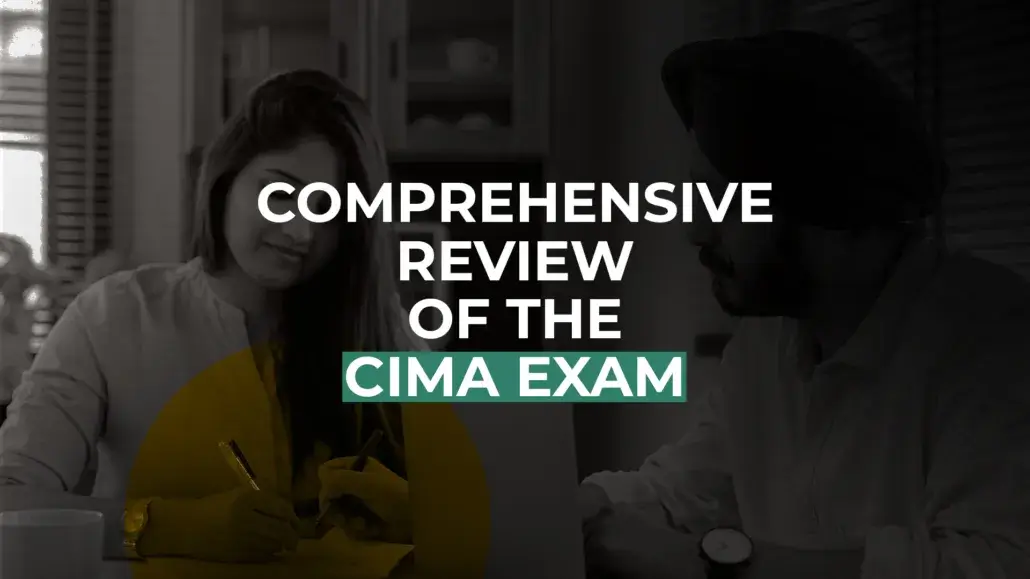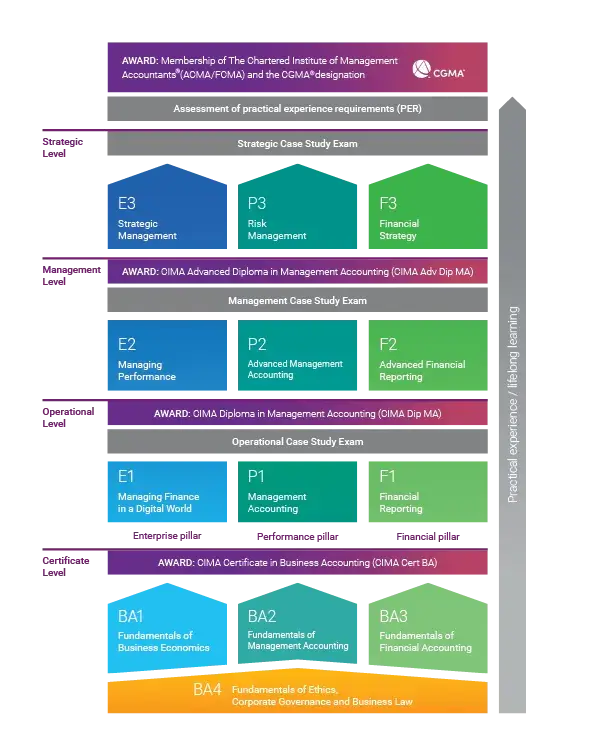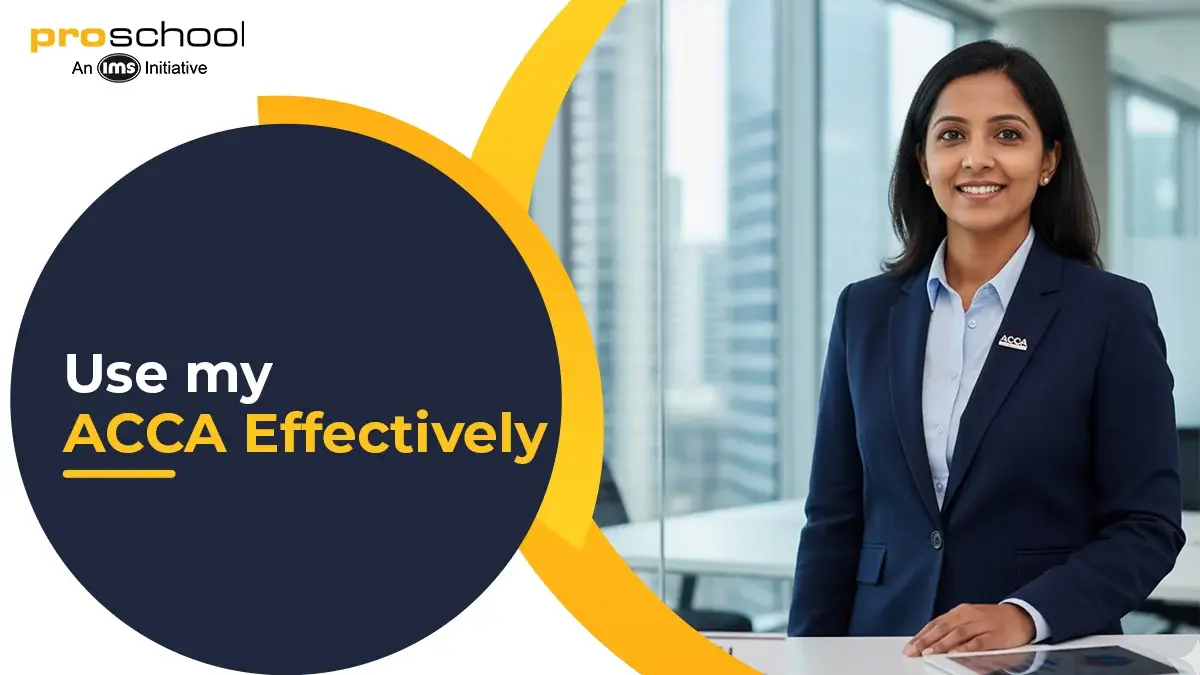CIMA Exam Results and a Look at the Structure

Here's What We've Covered!
For a long time, when someone said they wanted to make a career in finance or business, there were only a limited number of options that people used to consider.
Now, there are several options available for the same. However, nothing can beat the reputation and global recognition of a CIMA Exam.
CIMA qualification is one of the best options for candidates who want to have a career in financing and business that involves many more things than just accounting.
While the CIMA exam is an amazing option, it is also complicated. And finding relevant and accurate information on the course and exam structure is not easy.
So how many exams will you have to sit in to get the CIMA Qualification? What is the exam structure? How to prepare for the exam? Find answers to all these questions in detail in this blog.
The CIMA Exam Structure
Candidates must possess a relevant master’s degree or equivalent accounting qualification, or they must have the Certificate in Business Accounting from the CIMA in order to sit for the CIMA Qualification Exam.
The operational, management and strategic levels make up the CIMA Exam, often known as the Professional Qualification.
There are three pillars on each level: the enterprise pillar (E), the performance pillar (P), and the financial pillar (F). The three pillars—organization management, management accounting, and financial reporting—can be thought of as exam topics.
To proceed to the next level, you must finish the previous one. This test is sequential.
The following chart will explain the CIMA exam structure:
There are three objective tests in each of the three levels, which stand-in for the three pillars. Each level also includes one integrated case study. This means that you’ll have to give a total of 12 tests.
( 3 objective tests + 1 integrated case study ) x 3 levels = 12 tests
CIMA Levels Structure
This is the test sequence that each candidate must follow in a sequential manner to get the CIMA qualification. However, there’s one exception for those with an MBA or a master’s degree in accounting. By passing the CIMA Masters Gateway test, you can select the expedited route. If you succeed, you can move directly to the Strategic level without going through the first two.
Out of all CIMA exams, the CIMA Masters Gateway Exam has the lowest pass rate. To benefit from this fast track, one must put up the effort. If you are not taking the expedited route, here’s the structure of CIMA levels.
1. Operational Level
This level encompasses junior accountant responsibilities, including strategy implementation and associated reporting. The ability to create financial statements, give management accounting data and employ the proper tools to make business decisions will all be taught to candidates.
The 3 objective tests in this level are:
- Organizational Management (E1)
- Management Accounting (P1)
- Financial Reporting and Taxation (F1)
You receive the CIMA Diploma in Management Accounting after finishing this level.
2. Management Level
This describes the function of managers, who serve as the link between senior management and the workforce as well as between strategy and implementation. Monitoring and reporting are the main tasks.
The candidates will gain knowledge about setting up group accounts, choosing prices and products and managing relationships and projects.
The 3 objective tests in this level are:
- Project and Relationship Management (E2)
- Advanced Management Accounting (P2)
- Advanced Financial Reporting (F2)
You receive the CIMA Advanced Diploma in Management Accounting after finishing this level.
3. Strategic Level
Senior management is covered at this level; the curriculum focuses on making strategic decisions and giving the framework in which those decisions will be carried out. Candidates gain knowledge of how to create a financial strategy, manage strategic alliances, and recognize and control risk.
The 3 objective tests in this level are:
- Strategic Management (E3)
- Risk Management (P3)
- Financial Strategy (F3)
Candidates will be qualified to submit their real-world experience for evaluation once they have finished the Strategic level.
CIMA Exam Format
Objective Tests
Although the candidates can take the Objective Tests at each level in any sequence, they must pass all three to move on to the Case Study test. Based on the level and learning pillars, the Objective Tests have a unique syllabus. Each test consists of 150 multiple-choice questions that need to be solved within 90 minutes.
Case Study Exam
The Case Study tests, in contrast to the Objective Tests, combine the knowledge and learning from all three learning pillars and are set in a mock business environment involving one or two made-up companies ( based on real business scenarios).
Each case study test lasts three hours. Short responses and essays are expected from candidates.
What Is The Difficulty Of Level
The CIMA qualifying tests are challenging, particularly for people without training. The amount of knowledge in tests that include both management and finance might be challenging for many. In addition to covering a broad range of material, CIMA tests also have a low success rate. The exams are nevertheless passable with the correct tools and dedication.
Strategies To Use Before The Exam
Follow a Study Plan
Establish a rough learning result and set aside a designated amount of time to cover particular course material portions. Take a practice exam after finishing a particular learning section to assess your understanding and pinpoint any weak areas that need further work.
Choose What Suits You Best
Focusing on studying more effectively is always preferable to studying longer and harder. There are a number of suggested study methods that you can choose from. Focus on finding the one that works best for you and doing that consistently.
Practice Hard
Select an online study program at CIMAstudy.com that meets your needs and gain access to online course materials. Additionally, you have access to CIMA Aptitude, where you can take practice exams to determine how prepared you are for the exam.
Time Management Is the Key
Take as many practice exams as you need to gain exposure to a variety of exam-style questions and develop time management skills before the real thing.
Make A Concerted Effort for Case Study Exam
To get ready, concentrate on assessments based on actual situational occurrences. Exams using case studies assess knowledge in all three subject areas studied at each professional level. Online mock exams are a viable option for the same.
Strategies To Use During The Exam
Use Your Reading Time Intelligently
Before the exam begins, you have 20 minutes to read. During this period, you are not permitted to open the answer book or write in it, but you are permitted to study the question paper and make an exam strategy.
Understand First, Answer Later
Always read the question thoroughly and comprehend it, as a matter of principle. Keep in mind that if you include information that is unrelated to the question, you will not gain any credit.
Offer A Structured Response
Try to offer a response that is well-structured and contains pertinent information. Make it a point to go over your answers to questions to ensure that you covered all of them.
Manage your Time
Don’t spend too much time on a single question; instead, divide up the time you have available in advance so that you can choose how much time to allot to each question based on its credit value. Instead, try answering some other questions and, if you can, come back to it later.
Conclusion
After knowing the exam structure, passing CIMA might sound extremely difficult. Well, it is difficult if you do not prepare in the right way and do not have a mentor to guide you through the process.
IMS ProSchool is the best option for you to take the CIMA course from. We offer 1:1 mentorship from CIMA-qualified professionals who have deep practical knowledge. We also provide students with skill training, mock tests, and high-quality study material as well.
Start your preparation for the CIMA Exam by calling us at +91 7710044425. You can also fill out the contact form, and one of our Course Consultants will walk you through your options.
Resent Post
>
How to Find ACCA Jobs Online After Qualifying: Real Portals, Tips & Career Guidance
>
Financial Modelling Classes in Hyderabad: Your Guide to the Best Institutes
>
Still Paying CFA Enrollment Fees? Here’s the Big 2026 Update!
>
How to Use myACCA Like a Pro: Dashboard, Exams, Deadlines & More!
>
Difference Between Financial Accounting and Management Accounting: A Complete Guide




